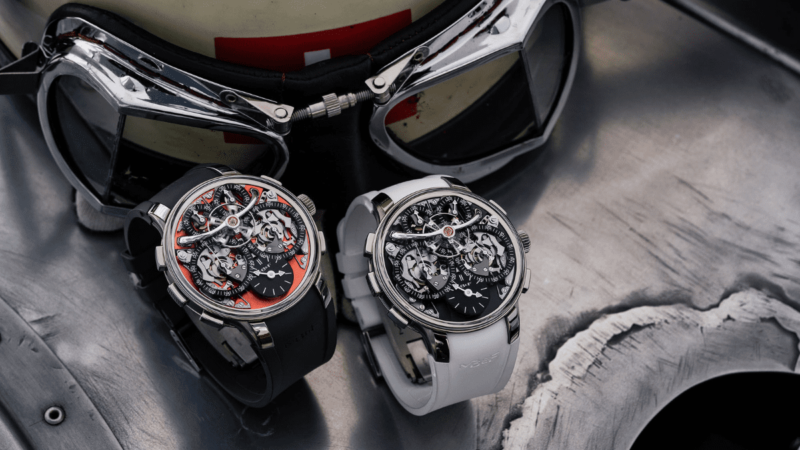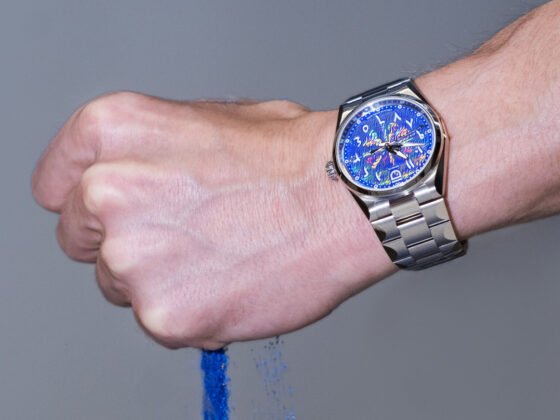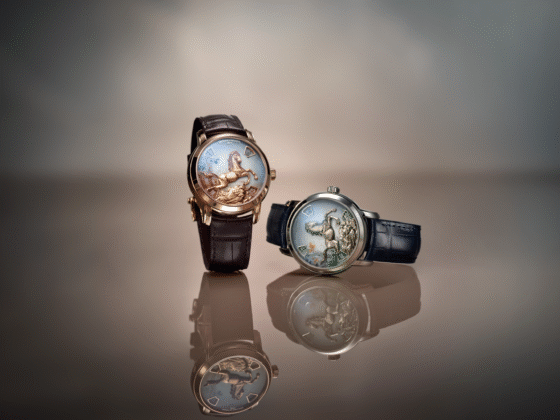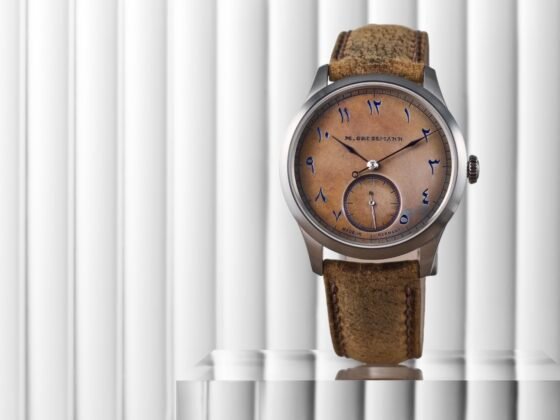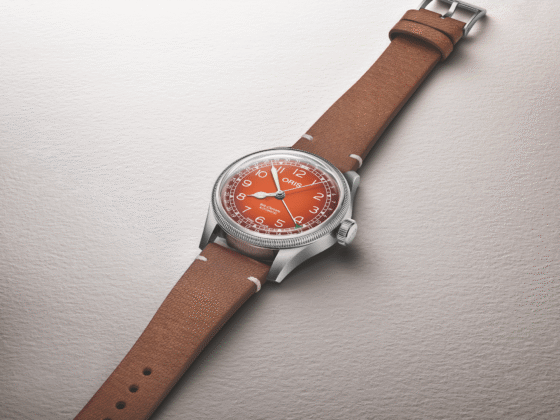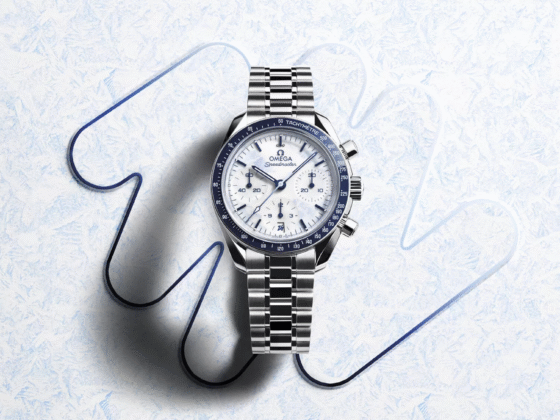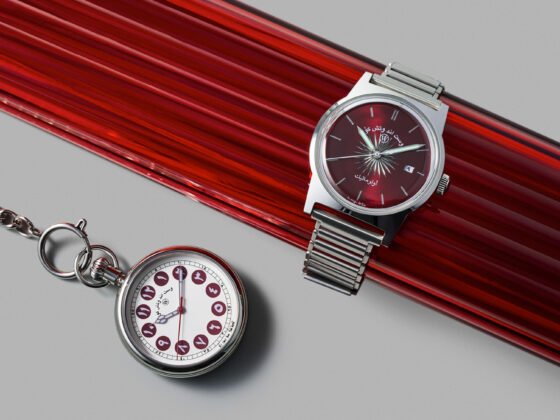Legacy Machine Sequential EVO is MB&F’s first-ever chronograph, and its 20th calibre in just 17 years. And because it’s MB&F, the LM Sequential EVO is also the first chronograph wristwatch of its kind. Conceived by Stephen McDonnell, the LM Sequential EVO movement incorporates two column-wheel chronographs and a groundbreaking “Twinverter” binary switch. The latter operates multiple timing modes, including split-second and lap timer modes – a combination never seen before in any chronograph.
Northern Irish watchmaker Stephen McDonnell is a key figure in the MB&F story. He was among the handful of watchmakers who assembled the first few movements of Horological Machine N°1, the genesis of MB&F. A decade later, McDonnell developed the award-winning Legacy Machine Perpetual (launched in 2015) – a groundbreaking approach to one of the most prestigious traditional high complications, the perpetual calendar. When Maximilian Büsser, MB&F founder and CEO, spoke to McDonnell in 2016 about the possibility of a follow-up to LM Perpetual, the response was: “I have an idea.”

The “idea” was to allow two chronograph systems to be operated separately, enabling different timings to be taken and preserved long enough for the results to be recorded. The two chronograph mechanisms were linked to the same oscillator to eliminate timing errors due to tiny chronometric discrepancies between different timers.
Further refinements followed. To eliminate the infamous flutter of the chronograph seconds hand without the need for an amplitude-draining friction spring, McDonnell reconfigured the chronograph vertical clutch to sit within the main gear train. To eliminate the amplitude fluctuation between the active and inactive modes of the chronograph, he incorporated internally jewelled chronograph clutch shafts. The crowning touch to McDonnell’s “ideal chronograph” is the “Twinverter” concept – the ability to toggle instantly between chronograph operating modes.

The dial plate of LM Sequential EVO features two chronograph displays for the two systems. One has its seconds display at 9 o’clock and minutes display at 11 o’clock. The other has its seconds display at 3 o’clock and minutes display at 1 o’clock. Each of these chronograph displays can be started, stopped, and reset completely independently of each other, using the start/stop and reset pushers on their respective sides of the case. These make up the four chronograph pushers you would usually associate with having two chronograph mechanisms in one watch.
The fifth pusher, located at the 9 o’clock position, is the “Twinverter” – the innovation that elevates the functionality of the LM Sequential EVO beyond any existing chronograph wristwatch. It controls both chronograph systems by operating as a binary switch that inverts the current start/stop status of each chronograph.

In other words, if both chronograph displays happen to be stopped (at zero position or otherwise), pressing the Twinverter will cause both of them to start simultaneously. If they are both running, the Twinverter makes them stop. If one is running and the other is stopped, the Twinverter stops the one that is running and starts the one that is stopped.
The Twinverter switch function effectively allows LM Sequential EVO to do things that no chronograph wristwatch has accomplished thus far. The “Independent mode” measures the duration of multiple events with separate starting points and endpoints, even when the events overlap in timing. The “Simultaneous mode” measures the individual durations of two events that start simultaneously, but have different endpoints. The “Cumulative mode” measures the individual cumulative durations of two discontinuous events. The “Sequential mode (or lap mode)”measures the individual sub-durations of a single continuous multi-phase event, with provision for sub-durations that last over a minute.

LM Sequential EVO can therefore be used just as you would any other chronograph, but thanks to its twin chronograph mechanisms, it can also perform the same functions as a split-seconds chronograph. In fact, thanks to the mechanical improvements conceived by McDonnell, it outperforms conventional chronographs and split-seconds chronographs in terms of energy efficiency and precision.
Zirconium, first used in LM Perpetual EVO, is the debut case material for the LM Sequential EVO. It is a silvery-grey metal admired for its deep lustre. It is lighter than stainless steel and more durable than titanium. Coupled with these exceptional properties, its hypoallergenic and anti-microbial attributes make it ideal for an active lifestyle watch. Because zirconium is known to spontaneously ignite in powdered form, it can be highly dangerous to machine except under strict environmentally controlled conditions, explaining its rarity in the world of watchmaking.

A no-bezel case design emphasises the movement within, allowing the finely balanced and symmetrical work of Stephen McDonnell to be fully showcased. The dial plate is available in atomic orange or coal black.
The iconic sapphire-crystal dome characteristic of the LM collection underwent a complicated shift in geometry in order to accommodate the placement of the 3Hz (21,600vph) suspended balance in relation to the chronograph displays. Despite the final appearance of the dial crystal — forming a perfectly smooth arch — there are actually two subtle (and difficult to achieve) angles incorporated within the chamber of the crystal in order to minimise the overall height of LM Sequential EVO when worn on the wrist.
An integrated rubber strap, an essential EVO feature, makes for a smoother wearing experience, while its zirconium case, 80 metres of water resistance and internal “FlexRing” damping system give unprecedented resilience to a movement this complex.

